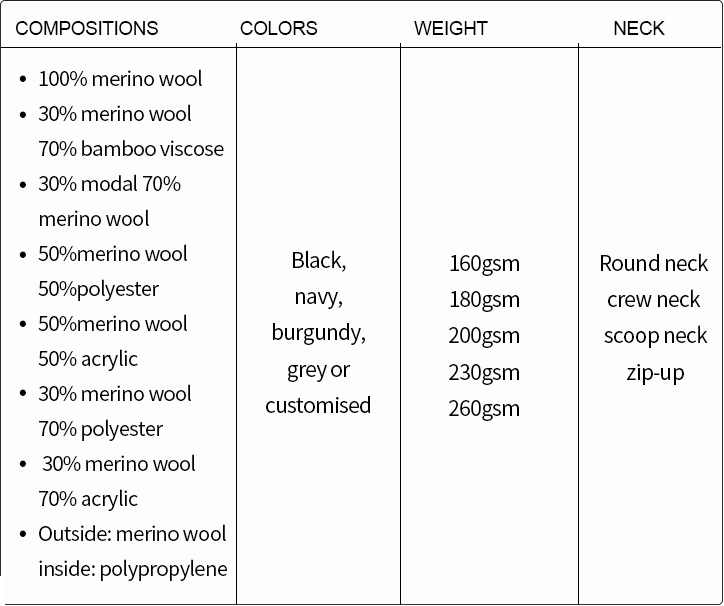Excellent Merino Wool Base Layer Info
Wiki Article
What Makes Yak Merino Base Layers So Beneficial For Winter Sports Apparel In Regards To Warmth/Temperature Regulation, Moisture Management Durability, Comfort And Warmth?
Yak merino layer base layers are the most appropriate winter sports apparel. They stand out due to a combination factors that enhance warmth and temperature regulation.
Insulating Properties: Both yak and Merino wool are naturally insulation. Yak fibers are hollow and hold in air to create warmth. Merino Wool is renowned for its superior insulation.
Regulates body temperature - The fabric is breathable, and helps to regulate body temperature by retaining heat in cold temperatures.
Moisture Management-
Moisture-Wicking- Merino wool's moisture-wicking properties remove moisture from your skin and then disperse it, preventing sweat build-up. Yakwool is also a great way to transport water. It keeps the wearer dry and comfortable while engaging in intense physical activity.
Comfort-
Softness - Merino is famous for its fine, soft fibers, which are gentle on the skin. The addition of yak wool which also has soft fibers, improves the feeling of comfort.
Odor Resistance - Both kinds of Wool have natural antimicrobial qualities, which reduces the growth and spread of odor-causing bacteria. This helps keep the clothing fresh.
Durability-
Strength and Resilience- Yak wool is naturally strong and durable. When it is combined with the resilience of Merino wool, the material will become sturdy and resistant to wear and tear, which makes it ideal for rigorous activities.
Natural Fiber Benefits-
Renewable Fibers- Merino and Yak wool are biodegradable renewable fibers, making them an environmentally friendly option.
They can be used to deal with a range of weather conditions.
Combining merino with yak wool creates a fabric that can be produced that is sturdy and warm, while still regulating temperature and managing moisture. It makes yak merino wool base layers extremely effective for winter sports clothing, catering to the requirements of outdoor activities in cold weather, and maintaining the wearer's comfort and dry. Take a look at the top merino wool base layer examples for website advice including best merino base layer, merino wool underlayer, merino wool thermals mens, ski layers, smartwool merino base layer, wool thermal underwear, merino wool leggings mens, patagonia merino wool base layer, merino wool underlayer, merino ninja suit and more.

What Are The Benefits Of Bamboo Clothing With Regards To The Softness, Antibacterial Properties Durability And Renewable?
Bamboo clothing comes with many benefits that include the softness, antibacterial properties, and longevity.
The silky and soft texture is often compared to luxurious materials like cashmere or silk. It feels soft and soft against your skin, providing a pleasant and enjoyable wearing experience.
Antibacterial Properties-
Natural Antimicrobial Qualities - Bamboo has an organic antimicrobial ingredient known as "bamboo kun." This property assists in preventing the growth odor-causing bacteria as well as fungi and mold that can be found on the material.
Durability-
Strength- Bamboo fibres, despite being soft, are robust and durable. Bamboo clothing is resistant to regular wear, which makes it suitable for different activities without compromising quality.
Renewability-
Rapid Growth: Bamboo is a resource that is fast growing and doesn't require pesticides. It can reach maturity within several years, which makes it available for sustainable harvesting and lessening the environmental impact of cultivating.
Sustainability-
The production of bamboo that is eco-friendly and cultivation usually have less impact on the environment than synthetic materials. Bamboo is sustainable because of its rapid growth rate, its requirement for little water, and because it can grow in a range of climates.
Biodegradability-
Natural Breakdown - Bamboo garments are biodegradable. This means they will degrade themselves naturally at the completion of their lifespan. This decreases the quantity of non-biodegradable material that ends up in landfills and also helps to minimize environmental pollution.
Hypoallergenic Qualities
Reduced Skin Irritation Bamboo fabric causes less irritation to the skin than synthetic materials. It is therefore the best choice for those who suffer from sensitive skin.
Bamboo clothing appeals to those looking for environmentally friendly practical, comfortable clothing. These characteristics create a pleasant and eco-friendly experience. View the best bamboo clothings info for blog advice including bamboo family pajamas, bamboo fitness clothing, bamboo under wear, bamboo dress shirt, bamboo t shirts wholesale, bamboo top, bamboo fitness clothing, bamboo pants, bamboo pants, organic bamboo pajamas and more.

What Are The Main Differences Between Bamboo And Merino Clothes?
Merino layers along with regular wool, and bamboo clothing are different in their characteristics.
Softness Merino is renowned for its fine soft fibers that make it comfortable to wear. It's much less likely to cause irritation and itching than traditional sheep's wool.
Merino wool is extremely effective in absorption of moisture, allowing it to evaporate. It keeps wearers cool and comfortable.
Merino is natural insulation that offers extraordinary warmth even when wet. It regulates body temperature, offering warmth in cold temperatures and breathability to prevent overheating in the course of exercise.
Odor Resistance - It's an anti-bacterial ingredient in nature that inhibits bacteria growth which keeps clothing fresh and smells good even after prolonged wear.
Bamboo Clothing
Softness Bamboo clothing is known for its silky and soft texture. It could be described as silk or even cashmere. It's luxurious and soft to wear.
Bamboo fabric has moisture-wicking properties that help draw away moisture and help keep you dry.
Temperature Regulation- Bamboo clothing has natural temperature-regulating abilities, offering warmth in winter and breathability to prevent overheating.
Sustainability - Bamboo is a extremely renewable resource that grows rapidly without the need for fertilizers or pesticides. Bamboo is biodegradable.
Regular Wool
Texture. The traditional wool texture may vary. Certain types of uncomfortable or itchy textures are more rough.
Warmth - Wool can provide excellent insulation and warmth but it also feels bulky.
Wool is able to absorb moisture. This makes it less effective at wicking moisture in comparison to merino, bamboo, or other textiles. Wool retains its warmth, even when it is damp.
The benefits of merino are softness, moisture-wicking ability, resistance to odor, and insulation. Bamboo clothing is supple and wicks moisture away, regulates temperature and is eco-friendly. Wool has a variety of textures, and doesn't always provide the same softness or moisture-wicking abilities as bamboo and merino, yet it provides warmth and insulation. Each has distinct advantages, catering to different preferences and requirements when it comes to winter clothing. Read the best bamboo winter clothing hints for blog recommendations including merino base layer womens, wool layers, merino wool layers, best layers for skiing, omniwool base layer, merino thermals, merino wool base layer hunting, wool thermals mens, paradox merino blend, wool underlayer and more.
